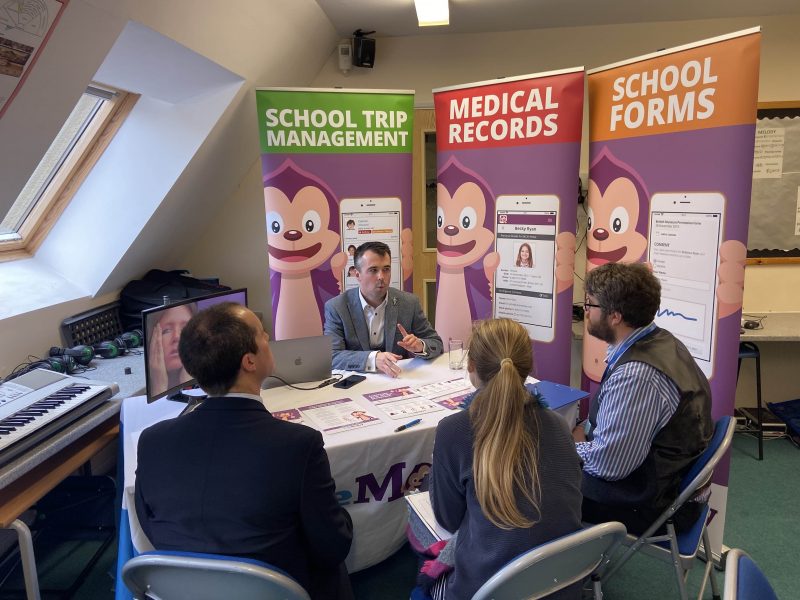

The global pandemic has blurred the lines between work and home for teachers. How can we ensure we are productive at work but also able to have a sustainable work-life balance?
Shuaib Khan provides an insight into the notion of toxic productivity. Busywork or busy at work looks at the role of teachers and school leaders in effectively managing workloads, setting priorities, reducing burnout and challenging workaholism.
Khan provides some practical tips and ideas in making the most of the “gold dust” which he refers to as time.

Toxic productivity, academic perfectionism and workaholism
After a long day of teaching, driving home always feels like the perfect opportunity to reflect. One question I have repeatedly asked myself is, “have the tasks I have completed today been necessary and useful?” I love teaching but the role is accompanied by copious amounts of admin, bureaucracy, and what my old NQT mentor calls “busy work.” Like many teachers, being a perfectionist hasn’t just been a throwaway line at interviews. We want the best for our students but sometimes we must take a step back, look at the bigger picture and re-evaluate the purpose of the tasks we are undertaking. No one benefits from toxic productivity and given the teacher workload crisis, our time as educators is quite literally gold dust.
What is busy work?
Naturally, teachers are conscientious and reflective practitioners. However, with this comes the insatiable desire to want to look and appear busy in the eyes of our colleagues and peers. We often undertake activities that aren’t necessarily important or add value. Teachers are often the masters of creating work for the sake of work or for the sake of looking busy. Tasks like making a new display or tidying a bookshelf do have their own time and place but pressing tasks like deadlines and assessments need to take precedence. As a society, we celebrate busyness rather than restfulness and as a profession, rarely do we stop to ask others how they are doing? The focus tends to be on what they are doing.
During the summer holidays, we see our wonderful new NQTs on social media sharing their new resources and decorating their classrooms. In 2016, I was one of these gleeful NQTs and spent my entire summer making my classroom into the utopia of teaching and learning. Within weeks, I began to feel burntout. There is a tacit expectation to work longer and harder which is often glorified on social media and perpetuated by professional guilt. However, harnessing the enthusiasm and work-driven busy ethos we have as educators and our own wellbeing is the balance we should be striving for.
How to deal with toxic productivity?
From personal experience, I have developed three strategies I have used to help cope:
Do Now, Prioritise, Tomorrow and Later – Setting short-term, medium-term, and long-term goals is how we can prioritise and help ease the workload crisis and reduce the impacts of toxic productivity. We often hear nebulous and reductive phrases like “work smarter, not harder.” Yet, what does that mean for a teacher who has spent the entire day teaching their heart out, completed duty, skipped lunch to print resources and done a 2hr after-school CPD session?! So, how to tackle this? Setting small daily goals is vital. I have previously used a simple table like this to help prioritise my daily/weekly engagements. This bitesize oversight really helped improve my time management and compartmentalise my thoughts and anxieties. These goals are not set in stone and will constantly change. But having an oversight of these goals can be really empowering as you plan your day or week.
Weekly:
| Mon | Do Now: Lessons x4 | Prioritise: Year 10 Data entry | Tomorrow: CPD session |
| Tues | Do Now: Lessons x3 | Prioritise: Year 12 TAG assessment | Tomorrow: Duty |
| Wed | Do Now: Lessons X5 | Prioritise: Evidence folder Mentor meeting Intervention | Tomorrow: Teams training session |
| Thurs | Do Now: Lessons x2 | Prioritise: Textbook order Display backing | Tomorrow: Faculty meeting |
| Fri | Do Now: Lessons x4 | Prioritise: Year 13 Mock paper Year 8 PSHE project | Tomorrow: PSHE project prize |
Teacher wellbeing – remains the hottest potato in education. Despite being etched into OFSTED frameworks, we still have a teacher workload crisis. There is no one-size-fits-all approach to teacher wellbeing as the needs of staff vary from teacher to teacher. However, a strong teacher wellbeing ethos is important. If school leaders are willing to invest in their staff, tackling teacher workload and making contact time as effective and learner-driven as possible should be a priority. Tackling busywork starts with defining what is and is not teacher wellbeing. For this, I would like to turn to my non-exhaustive list that distinguishes between what is and is not teacher wellbeing.
| Wellbeing is: | Wellbeing is not: |
| Caring about the person before the ‘teacher’ | Being reactive rather than proactive to support staff. |
| Research-driven policies that focus on student progress | Preference of in-house arbitrary policies rather than research-driven initiatives |
| Realistic and attainable targets set with contextual factors in mind. | Targets set with the ‘data is king’ viewpoint and contextual factors overlooked. |
| Communication and collaboration | Forced staff gatherings |
| Support with personal circumstances and necessary adjustments made | ‘Return to work’ causing greater anxiety and concern |
| A supportive staff room | No staff room or place for PPA |
| Lunchtime for lunch and not work | The notion of ‘work smarter, not harder’ |
| Being able to say ‘no’ to extra commitments without fear of repercussions | Increase in ‘directed time’ or ‘non-negotiables’ |
| A transparent and approachable SLT | More meetings and scrutiny |
| Teacher autonomy with planning, assessment, and subject-specific pedagogy. | Rigid teaching and learning policies with the underlying idea of ‘this is our way’ |
Setting clear boundaries – The COVID pandemic has moved learning online several times. Alongside this, the boundaries between work and home have been blurred more so than ever. I often found myself wired into my computer and the guilt of working from home meant I was constantly checking emails or scouting for new CPD courses. Unintentionally I was creating more work for myself. The inability to take a break or be seen taking a break fuels this much valorised workaholism. However, the following practical steps have allowed me to wrestle back some autonomy, use my priority list (point one) and attain a better work-life balance.
In summary
The nature of the education climate right now, we must look after ourselves and our wellbeing as teachers. Alongside all the day-to-day roles we complete in the classroom, there is also a lot of busywork we can often unnecessarily prioritise. In a society that celebrates busyness, as teachers and particularly following the global pandemic, we must realign our values and ask ourselves what is important. As my old PGCE mentor once told me, “the two most urgent and persistent questions in education are – What is the impact on student progress and how does it affect staff?” So, it is busywork or are we busy at work?